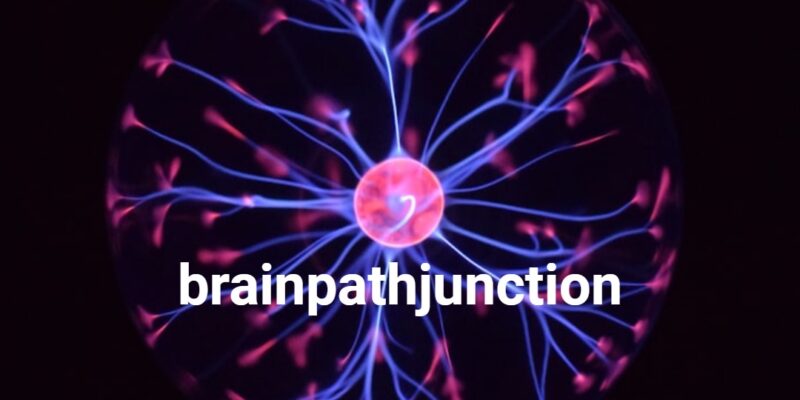brainpathjunction The secrets of connectivity

Introduction to Brain Connectivity
The human brain is a remarkable organ, constantly buzzing with activity. Have you ever wondered how different parts of the brain communicate? This intricate web of connections is what we call brain connectivity. It’s more than just a scientific term; it’s the foundation for our thoughts, emotions, and behaviors.
Connecting various regions of the brain allows us to process information efficiently and respond to our environment effectively. At the heart of this connectivity lies something fascinating: brain pathways, which serve as highways for signals traveling throughout our minds. Understanding these pathways unveils secrets that could unlock powerful insights into mental health and cognitive function.
Join us on this journey as we explore how these connections shape who we are and learn practical ways to enhance them in our everyday lives. Let’s dive deeper into the world of brainpathjunction—the intriguing intersection where neuroscience meets personal well-being—because understanding your mind can empower you like never before!
Understanding the Role of Brain Pathways
Brain pathways serve as the intricate highways of our nervous system. They facilitate communication between different regions of the brain, ensuring that signals travel swiftly and efficiently. Imagine them as interconnected routes that allow information to flow seamlessly.
These pathways are essential for various functions, including memory, emotion, and motor skills. When one area is activated, it can trigger a cascade effect throughout the network. This interconnectedness plays a vital role in how we process experiences and respond to stimuli.
Furthermore, disruptions in these pathways can lead to cognitive impairments or emotional disturbances. Understanding their function helps researchers identify potential therapeutic targets for mental health disorders.
The complexity of brain pathways illustrates the marvels of human cognition. Each neural connection contributes uniquely to our thoughts and actions, shaping who we are at every moment.
The Different Types of Brain Pathways
Brain pathways are intricate networks that facilitate communication between different parts of the brain. Understanding their types can shed light on how we think, learn, and feel.
There are two primary categories: long-range and local pathways. Long-range pathways connect distant brain regions, enabling complex functions like decision-making and emotional regulation. These connections allow for integrated responses to stimuli from our environment.
Local pathways serve specific areas within the brain. They play crucial roles in processing sensory information or coordinating motor skills. Each pathway contributes uniquely to our cognitive abilities.
Moreover, myelinated versus unmyelinated fibers also differentiate these pathways. Myelinated fibers transmit signals faster due to their insulating sheaths, while unmyelinated ones process slower but offer flexibility in response patterns.
This diversity ensures that our brains function seamlessly across various tasks—be it remembering a song or mastering a new skill.
How Brain Connectivity Affects Mental Health
Brain connectivity plays a crucial role in shaping our mental health. When the pathways connecting different brain regions function optimally, emotions and thoughts can flow freely. This harmony is essential for resilience against stress.
Disruptions in these connections, however, can lead to various mental health challenges. For instance, weakened links might contribute to anxiety or depression. The brain struggles to balance mood-regulating chemicals when communication falters.
Research shows that enhanced connectivity fosters better cognitive functions like decision-making and emotional regulation. Individuals with strong neural networks tend to cope more effectively with life’s ups and downs.
Moreover, understanding brainpathjunctions opens doors for targeted therapies. By identifying specific areas of dysfunction, professionals can develop personalized treatment plans that address individual needs directly. Through this lens, we see how vital nurturing healthy brain connections is for overall well-being.
Improving Brain Connectivity through Lifestyle Changes
Improving brain connectivity can be simpler than you think. Small lifestyle changes may yield significant benefits for your mental agility.
Regular physical activity is a powerful tool. Exercise boosts blood flow to the brain, promoting the growth of new connections between neurons. Aim for at least 30 minutes a day, whether it’s brisk walking or dancing in your living room.
Nutrition plays a vital role as well. Incorporating omega-3 fatty acids from fish or flaxseeds into your diet supports cognitive function. Colorful fruits and vegetables provide essential antioxidants that protect against oxidative stress.
Don’t underestimate the power of sleep either. Quality rest allows your brain to consolidate memories and repair itself, enhancing overall connectivity.
Mindfulness practices like meditation have risen in popularity for good reason. They reduce stress while fostering neural plasticity—your brain’s ability to adapt and grow throughout life.
Engaging with others through social interactions also stimulates various pathways, enriching both emotional health and cognitive resilience.
Innovative Technologies for Studying Brain Connectivity
Innovative technologies are revolutionizing the way we study brain connectivity. Advanced imaging techniques, such as functional MRI (fMRI) and diffusion tensor imaging (DTI), provide detailed insights into how different regions of the brain communicate.
These tools allow researchers to visualize neural pathways in real time. They can track blood flow and monitor brain activity, uncovering patterns previously hidden from view.
Moreover, electroencephalography (EEG) offers a unique perspective by measuring electrical activity across the scalp. This non-invasive method captures dynamic changes in connectivity during various tasks or stimuli.
Machine learning is another game-changer in this field. By analyzing large datasets, algorithms can identify subtle relationships between brain structures and functions that human eyes might miss.
With these cutting-edge approaches, scientists are unlocking secrets about how our brains work together. The future holds even more promise as technology continues to evolve at an unprecedented pace.
Conclusion: Harnessing the Power of Brain Connectivity for a Better Future
Understanding brain connectivity opens up a world of possibilities. At the heart of this exploration lies the concept of brainpathjunction, where various pathways intersect to facilitate communication across different regions. This intricate network plays a critical role in shaping our thoughts, emotions, and behaviors.
By recognizing how brain pathways function and their impact on mental health, we can take proactive steps towards improving our cognitive well-being. Simple lifestyle changes—like regular exercise, a balanced diet, mindfulness practices, and social interactions—can enhance connectivity within the brain. These adjustments not only foster better mental health but also promote an overall sense of happiness.
Emerging technologies are making it easier than ever to study these complex networks. Techniques such as functional MRI (fMRI) and diffusion tensor imaging (DTI) provide insights into how different areas interact during various tasks or emotional states. This research is paving the way for innovative treatments that target specific connectivity issues associated with conditions like anxiety or depression.
Harnessing these insights could lead us toward richer understanding and potentially transformative solutions for mental health challenges in society. By emphasizing the importance of maintaining strong connections within our brains through both lifestyle choices and advanced scientific inquiry, we stand at the threshold of unlocking new potentials for ourselves and future generations. The journey towards enhanced brain connectivity promises exciting developments that may shift paradigms in mental wellness approaches worldwide.










